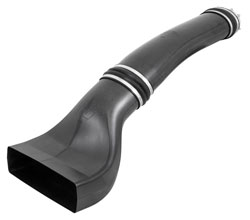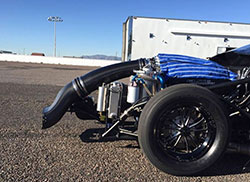NHRA Makes Move to Electronic Fuel Injection for Pro Stock Class
- 3 Jun 2016
|
The only constant in life is change. This saying is becoming more and more true as we progress further into the 21st century. While we aren't riding true hover boards or commuting in flying cars, we have still seen huge changes in all aspects of our daily lives. This is especially true in regards to the technology we use on a daily basis. These changes can even be seen in some of the most iconic American sports. The additions of the shot clock in basketball, instant replays in baseball, and electronic fuel injection (EFI) in motorsports have all caused a ruckus of one sort or another in their respective fields. When NASCAR made the switch to EFI it signaled a major change for auto racing. While most changes are widely accepted, there has been a bit of resistance to the switch to EFI, even though it has been present in motorsports since at least the 1950s. This may be because people were accustomed to carburetors or maybe because it was relatively easy to make big power with carbs, but whatever the reason, the pushback hasn't seemed to stop the transition. Most recently, NHRA announced that they changed the regulations for the Pro Stock class and made the switch from carburetion to EFI. In order to do so, there were a lot of associated changes that needed to be made. When NASCAR mandated EFI in 2012, it was made simpler because they were already using the standardized, Car of Tomorrow, chassis. With NHRA's switch, they made changes not only to the engine but to the exterior body of the cars and the intake tract. "When the NHRA switched the Pro Stock class from carburetors to fuel injection, they came to K&N to design and manufacture an intake system," explained Steve Williams, Chief Engineering Officer at K&N Engineering. "There aren't a lot of times where the sanctioning body, OEMs, chassis builders, and spec parts suppliers have worked so closely together on a project like we did on this one." One of the initial problems was the system had to work with every combination of body, motor, and intake manifold that the teams could possibly build. This made an interesting predicament because NHRA only mandated that the throttle body remain within the engine compartment at all times. But it did not limit where in the engine compartment it had to be. As a solution, K&N's new intake system is a two-piece design with a pair of couplers that help the teams adapt it to the location of their throttle body. "Another problem with the switch is that NHRA removed hood scoops as a method for air intake," added Williams. "This meant that the inlet had to move to the front bumper." The regulation for this inlet is a maximum size of 80 square inches. "This is where we ran into the next issue. The air close to the track is much hotter than the air three or four feet up." This is an issue that teams will have to combat, with help from the EFI manufacturer, Holley. Thanks to the almost unlimited tunable nature of EFI, these kinds of things are able to be accounted for. Carburetion would often cause some pistons to be either too rich or too lean but with EFI, teams can adjust for each piston on each shift during each segment of the run. They can also account for things like air temperature changes throughout the day. "Even with all the issues presented to us and the short time frame, we were able to work with NHRA, Holley, the race teams, and chassis builders to create an intake system that made the switch to EFI a lot easier," revealed Bert Heck, Performance Kits Manager for K&N Engineering. "After NHRA made the announcement, we had about two months to design, test, and manufacture a kit for all the teams. That is not a lot of time, but with days to spare, K&N 100-8522 carbon fiber intake tube was ready to be shipped to all the Pro Stock teams in time for the first race of the season in Pomona." Major changes are going to happen and with everyone working together toward the common good, big things can happen. The EFI switch in Pro Stock couldn't have happened without the cooperation and assistance from everyone involved. It just goes to show that even though these teams go out and battle each other week after week, in the end they are willing to come together and help one another out. |
|||
|
|||











